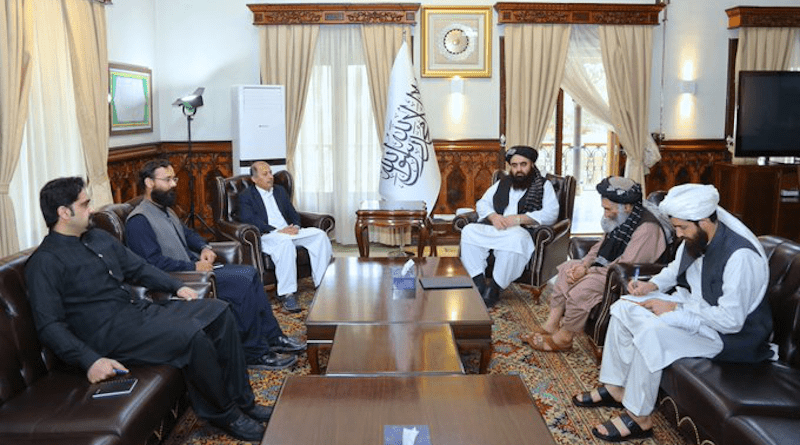The Taliban’s Lessons Learned And Lingering Threats: TTP And Al Qaeda On Afghan Soil – OpEd
By Shah Khalid
The fall of the Taliban regime in 2001, following the 9/11 attacks, marked a significant turning point in Afghanistan’s tumultuous history. Over the past two decades, Afghanistan has experienced immense change, with multiple regimes coming to power and foreign forces intervening in the nation’s affairs. As the Taliban once again controls Afghanistan, it is imperative to assess whether the group has learned from its past and to what extent it remains a harbinger of threats to regional stability and global security.
The Taliban has displayed a remarkable ability to adapt and survive over the past two decades. Their resurgence, following a period of relative quiescence, showcases their resilience and determination. Similarly, engaging in peace talks and negotiations with international actors, including the United States, reflects a shift in the Taliban’s approach. While such negotiations may indicate a strategic adaptation, their ultimate commitment to peaceful coexistence remains uncertain. Moreover, the Taliban’s diplomatic efforts have borne fruit as several countries, including Qatar and Pakistan, have recognized their government. This international acceptance signals the group’s newfound diplomatic finesse.
Lingering Threats on Afghan Soil
Tehrik-i-Taliban Pakistan (TTP)
The presence of the Tehrik-i-Taliban Pakistan (TTP) on Afghan soil poses a significant threat, not only to Pakistan but also to regional stability.
TTP’s Campaign of Violence: The TTP has carried out numerous attacks against Pakistani security forces, civilians, and infrastructure, causing significant loss of life and property.
Safe Haven in Afghanistan: The TTP has reportedly found safe haven in Afghanistan, where it continues to plan and execute attacks against Pakistan. This ongoing threat hampers bilateral relations and regional security efforts.
Al Qaeda and Other Extremist Elements
Reports suggest that Al Qaeda and various extremist elements continue to operate within Afghanistan, potentially posing a global security threat.
Al Qaeda’s Resilience: Despite years of international efforts to degrade Al Qaeda, the group has demonstrated a remarkable capacity to regroup and maintain a presence in Afghanistan.
Radicalization and Recruitment: Afghanistan’s instability provides fertile ground for radicalization and recruitment, making it a potential breeding ground for global terrorist threats.
Regional and Global Implications
Regional Concerns
Pakistan’s Security: The TTP’s presence in Afghanistan remains a pressing security concern for Pakistan, potentially undermining efforts to stabilize border regions.
Refugee Crisis: Regional countries, particularly Pakistan, face the prospect of a renewed refugee crisis as Afghan instability continues.
Global Security
Counterterrorism Efforts: The international community remains vigilant in its counterterrorism efforts, particularly in monitoring Al Qaeda’s activities and its potential to launch attacks beyond Afghanistan.
Geopolitical Realignment: The Taliban’s return to power and its ability to harbor extremist groups raise questions about the evolving geopolitical landscape in the region.
Conclusion
The Taliban’s return to power in Afghanistan may represent a strategic shift in their approach, including diplomatic engagement and negotiation. However, the presence of the Tehrik-i-Taliban Pakistan (TTP) and Al Qaeda on Afghan soil remains a source of concern for regional stability and global security. The international community must continue to monitor these developments closely, cooperate on counterterrorism efforts, and engage with the Taliban to ensure that Afghanistan does not once again become a safe haven for extremist groups with global ambitions. The lessons learned from the past two decades must inform the collective efforts to secure a more stable and peaceful future for Afghanistan and the world.

